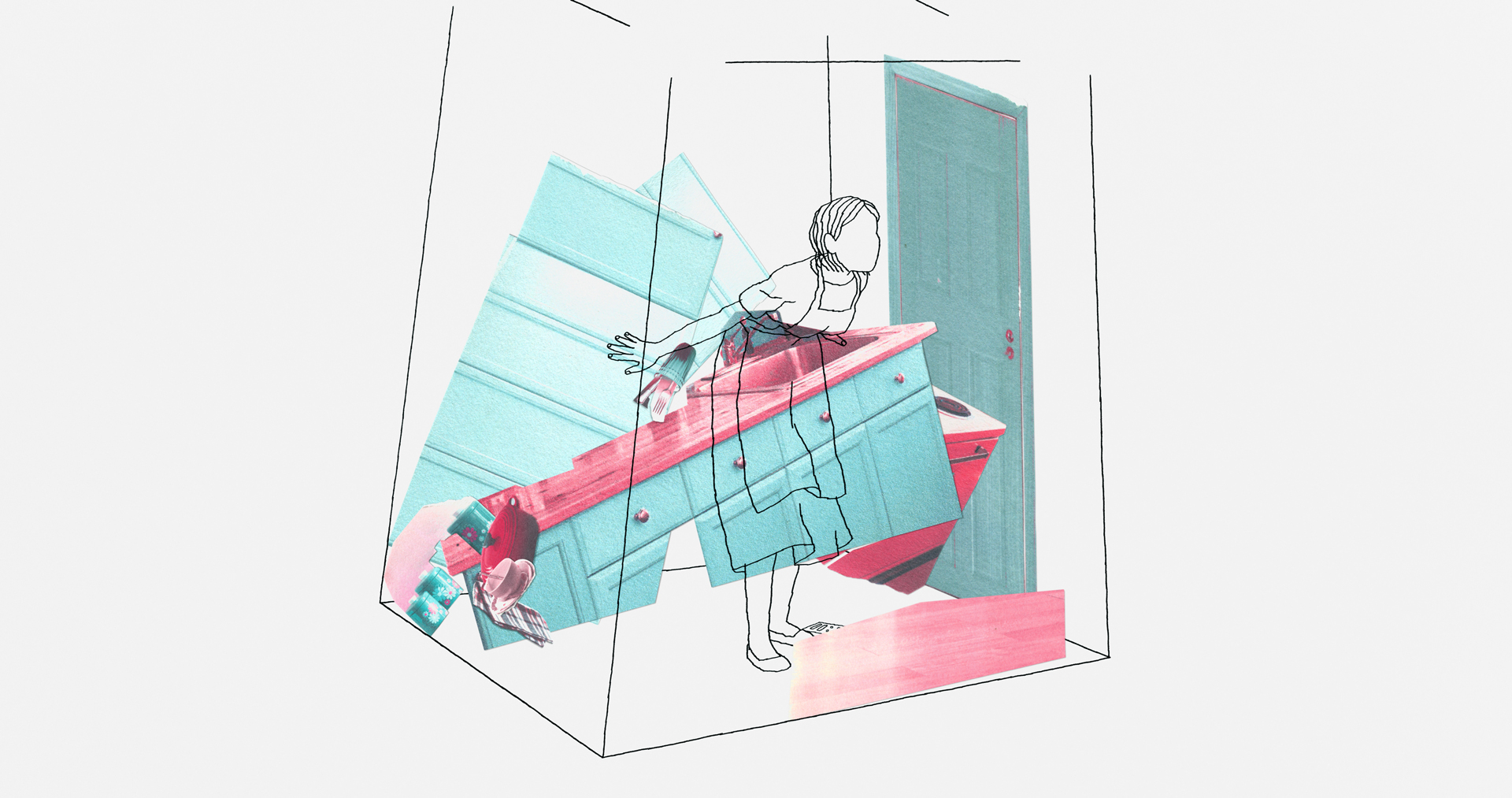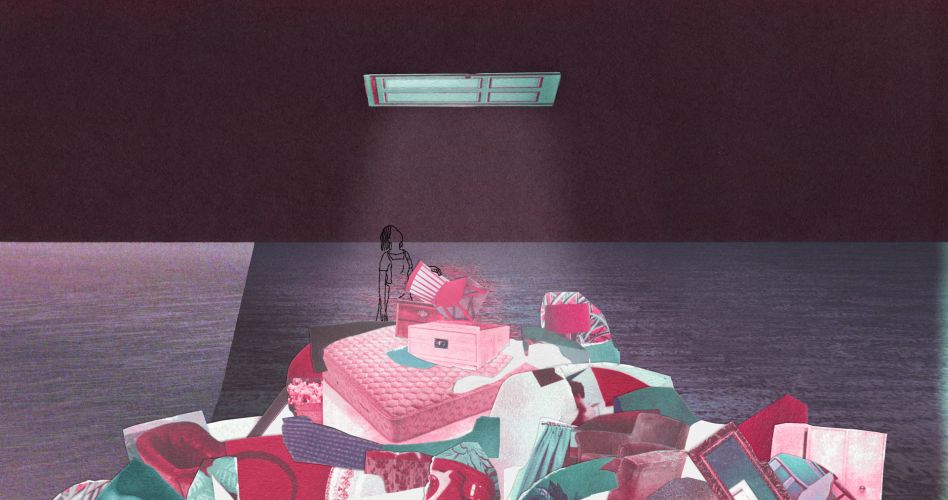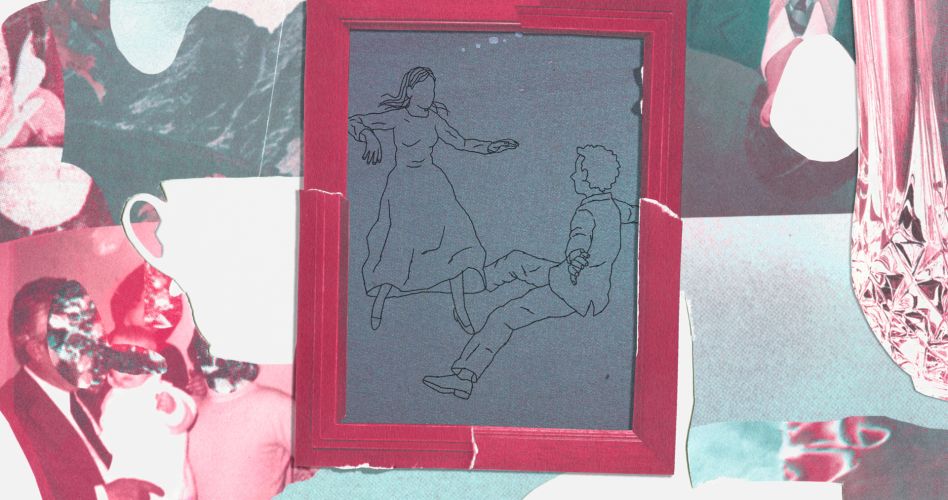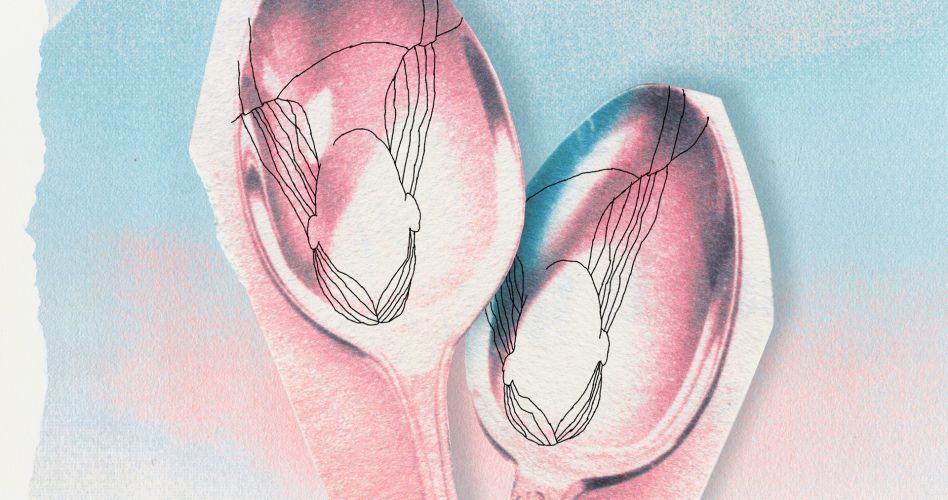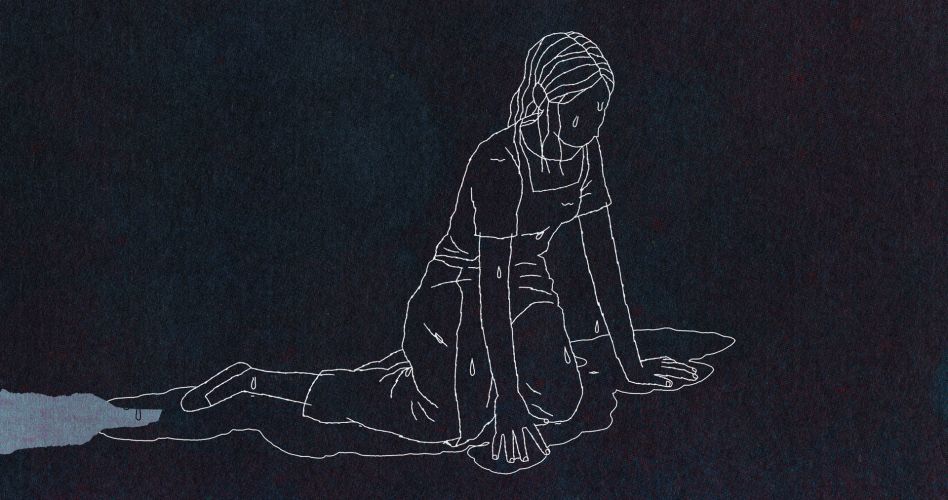10′, animated short film with 2D animation and found footage
[EN] A female victim of domestic violence looks back at the years when she was married and how difficult it was to stay afloat.
[FR] Une femme, victime de violence domestique, se rappele les années où elle était mariée et les difficultés qu’elle a rencontrées pour se maintenir à flot.
Theme
“The Soup” is an animated film that takes on the theme of domestic violence, through the use of (fictionalized) first person. Inspired by a real couple, the story was first adapted into a comic strip by Joana Estrela.
Techniques and narrative function
Although the narration establishes punctual links with the actions, overwhelmingly these actions are complementary to the narration and not its literal representation. Thus, in parallel with the narration, the film can be understood as having two levels of meaning. One that is communicated through drawing, associated with actions centered on the protagonist’s day-to-day life or how she interprets what happens to her. The other level will consist of “found footage,” such as photographs or other images, which can either be a scenario or physical space where the narrative takes place, functioning as metaphors, symbols or other figures of visual and narrative style.
The inner worlds
There is a certain fear that victims (of violence) have in verbalizing or reacting. Because when they do they can be beaten again, or else they fear seeing their feelings or their situation treated with indifference.
In the film we will access the protagonist’s feelings not only through gestures or reactions, but also by making her inhabit visual worlds (graphics, photographs or found footage) and sounds that are capable of expressing, for example, anger, sadness, fear or insecurity.
The physical space and the protagonist
I thought of the House as a character, not just as décor or an element of spatial location, that acts and transforms according to the situations. If the intention is to show that the protagonist is in danger, the house is a hostile place; if it is to show that there is oppression, the House reacts by closing in on the woman, isolating her or limiting her movements.
In addition to being an extension (of the violent nature) of the husband, the House “acts naturally” in the presence of others. Going back to normal or acting normal when the couple is with them (with their children, for example), in order to imply that “whoever is inside the convent knows what is going on inside.”
Liquid metaphor
Water is the other element (in addition to the House) that serves the purposes of the aggressor. At the beginning of the film it is associated with marriage and cycles of violence. It is an oppressive element, which makes the protagonist’s life difficult and places her in situations of stress, from which she seeks to free herself by hiding and undergoing a process of deformation.
Music
The sound of the film should have an experimental and abstract character, where the voice is used in some moments as the main instrument, which overlaps with all the others.
The idea is to create a continuity between the narrated discourse and the soundtrack through the use of the same musical object, with distinct functions and in different moments. On the one hand, it is the instrument that carries a discourse or a history: the voice that narrates the events. And in fulfilling this function, it must be naturalistic and avoid excesses or drama. On the other hand, it is the instrument around which a musical composition is constructed, capable of evoking feelings or conceiving of environments that are associated with the narrative or that do not exist completely within it.
It is in the scene where the protagonist finds refuge in a black space, that the use of voice as an instrument will be more present. The various abstract voices are combined in the creation of a sonorous brotherhood, reminiscent of the traditional Portuguese songs used in rituals, parties, or at work.
For examples of this kind of musical composition, I can point to the work of Meredith Monk, and to a piece by the collective Hysteria, entitled “Speech Organ”, which you can hear here.
NOTE D’INTENTION
Thème
“La soupe” est un film d’animation qui aborde le thème de la violence domestique, au travers du témoignage (fictionel) à la première personne. Inspirée d’un cas réel, l’histoire a été adaptée pour la première fois par Joana Estrela en bande dessinée.
Techniques et fonction narrative
Bien que la narration établisse ponctuellement des liens avec les actions, dans la plupart des cas ces actions sont complémentaires de la narration et non sa représentation littérale.C’est ainsi que, parallèlement à la narration, le film contient deux niveaux de lecture de plus. L’un est communiqué par le dessin, associé aux actions de la protagoniste centrées sur son jour le jour ou la manière comme elle interprète ce qui lui arrive.
L’autre niveau sera constitué de “found footage”, photographies ou autres images, qui pourront être tant un décor ou espace physique où a lieu la narration, mais qui pourront aussi fonctionner comme métaphores, symboles ou d’autres figures de style visuelles et narratives.
Les mondes intérieurs
Il y a une certaine crainte de la part des victimes de verbaliser ou réagir. Parce que quand elles le font elles peuvent être agressées à nouveau, ou par peur de voir leurs sentiments ou leur situation traités avec indifférence.
Nous allons accéder dans ce film aux sentiments de la protagoniste non seulement au travers de gestes ou de réactions, mais également en la faisant habiter des mondes visuels (graphisme, photographies ou found footage) et sonores qui seraient capables d’exprimer, par exemple, la rage, la tristesse, la peur ou l’insécurité.
L’espace physique et la protagoniste
J’ai pensé à la Maison comme personnage, et non pas seulement un décor ou élement localisation spaciale, qui agit et se transforme suivant les situations. Si l’intention est de montrer que la protagoniste est en danger, la Maison est un lieu hostile; s’il faut montrer qu’il y a une forme d’oppression, la Maison réagit, se referme sur la femme, l’isolant ou limitant ses mouvements.
En plus d’être une extension (de la nature violente) du mari, la Maison “agit de manière naturelle” en présence de tiers. Elle redevient normale ou se maintient normale quand le couple est accompagné (par ses enfants par exemple), de manière à faire entendre que “qui est dans le couvent est au courant de se qui s’y passe”.
Métaphore liquide
L’Eau et l’autre élément (en plus de la Maison) qui sert les buts de l’agresseur. Au début du film elle est associée au mariage et aux cycles de violence. Elle est un élément d’oppression, qui rend la vie de la protagoniste difficile et la met en situation de stress. Et de laquelle elle tente de se délivrer, se cachant et se soumettant à un processus de déformation.
Musique
La sonorité du film devra avoir un caractère expérimental et abstrait, où la voix sera utilisée à certains moments comme instrument principal, qui se superpose à tous les autres.
L’idée est de créer une continuité entre le discours narratif et la bande sonore, au travers de l’emploi du même objet musical, ayant des fonctions distinctes et en des moments différents. D’un côté, c’est l’instrument porteur d’un discours ou d’une histoire: la voix qui raconte les évènements. Et en accomplissant cette fonction elle doit être naturelle et éviter les excès ou dramatismes.
D’un autre côté, c’est l’instrument autour duquel se construit une composition musicale, capable d’évoquer des sentiments ou concevoir des ambiances qui soient associées à la narration ou qui peuvent la compléter.
C’est dans la scène oì la protagoniste rencontre un refuge dans un espace informe et sombre que le recours à la voix comme instrument sera le plus présent. Les diverses voix abstraites se combinent pour créer une confrérie sonore, qui rappelle les chants traditionnels portugais qui étaient utilisés dans les rituels, fêtes ou au travail.
Comme exemples de ce type de composition musicale nous nous référerons au travail de la nord-américaine Meredith Monk, et au expériences du collectif Hysteria, intitulées “Speech Organ” que vous pouvez entendre ici.
[ SCRIPT PREVIEW ]
[ SCÉNARIO ]
[ STORYBOARD (excerpt) ]
[ VIMEO PREVIEW ]
Budget: 149.550,00 €
Secured financing: 19.550,00 €


